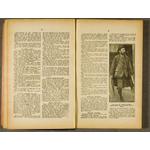Casualties
Sheehy Skeffington
On of the more tragic cases among the civilian casualties was Francis Sheehy-Skeffington who was murdered while in military custody. Francis Skeffington was born in 1878 in Bailieborough, Co. Cavan. His father was Dr Joseph Skeffington, an inspector of schools. He was educated at University College, Dublin where he was a friend of James Joyce. Indeed, when Skeffington’s essay ‘A forgotten aspect of the university question’ and Joyce’s ‘The day of the rabblement’ were both rejected by St. Stephen’s, the college magazine, they had them privately printed as a pamphlet entitled Two Essays (1901).
Skeffington worked as registrar of the college for two years, during which time he married Hanna Sheehy, a member of a notable Co. Cork nationalist family. As a token of his commitment to the equality of the sexes, he adopted her surname, thereafter calling himself Sheehy-Skeffington. The couple worked together in a number of socialist and radical causes, including women’s suffrage. Francis worked mainly as a journalist, becoming editor of the Irish Citizen of which he was co-founder in 1912, and contributing to a number of Irish, English, French and American papers and magazines. During the 1913 lock-out he was a member of the Peace Committee which was established to reconcile the two sides. He became a vice-chairman of the Irish Citizen Army on its foundation in 1913 on the understanding that it was to have a purely defensive role, but left when it adopted a political and military stance.
A dedicated pacifist, he campaigned against recruitment following the outbreak of the war in 1914, thereby getting himself sentenced to six months imprisonment. He supported Home Rule and disapproved of the increasingly militaristic posture of the Irish Volunteers. Well aware of the political orientation of Pearse and Connolly, he tried to impress upon them that civil disobedience could be a more powerful weapon than rebellion, urging that they work to establish a force ‘armed and equipped with the weapons of the intellect and the will’.
An illustration of Sheehy-Skeffington’s mentality is that when Captain Seán Connolly’s ICA men assaulted the gates of Dublin Castle on Easter Monday he put his life at risk by helping a wounded soldier. On Tuesday he was concerned at the scale of looting that was taking place and planned to organise a citizens’ police force to maintain law and order. That evening, for no apparent reason, he was arrested at Portobello Bridge in Rathmines and detained in Portobello Barracks. The following morning he was summarily shot at the behest of Capt. J.C. Bowen-Colthurst, a member of a Co. Cork landed gentry family.
Due mainly to the intervention of a conscientious senior officer, Major Sir Francis Vane, Bowen-Colthurst was court-martialled. He was found guilty but insane and detained in Broadmoor Criminal Asylum. A royal commission of enquiry subsequently awarded monetary damages to Mrs Sheehy-Skeffington, which she refused to accept.
The murder of Francis Sheehy-Skeffington aroused considerable public revulsion. Generally regarded as an amiable eccentric and universally respected for his principles, the circumstances of his death greatly contributed to the shifting of public sympathy away from the side of the supposed upholders of law and order to that of the insurgents. The public revulsion was particularly aggravated by the systematic attempt at a cover-up by the military authorities—up to and including General Maxwell. Meanwhile, reports of atrocities perpetrated by members of the South Staffordshire Regiment in the course of the fierce house-to-house fighting in the North King Street area at the back of the Four Courts, further inflamed public hostility, alienating even the most moderate of nationalists beyond recall.




